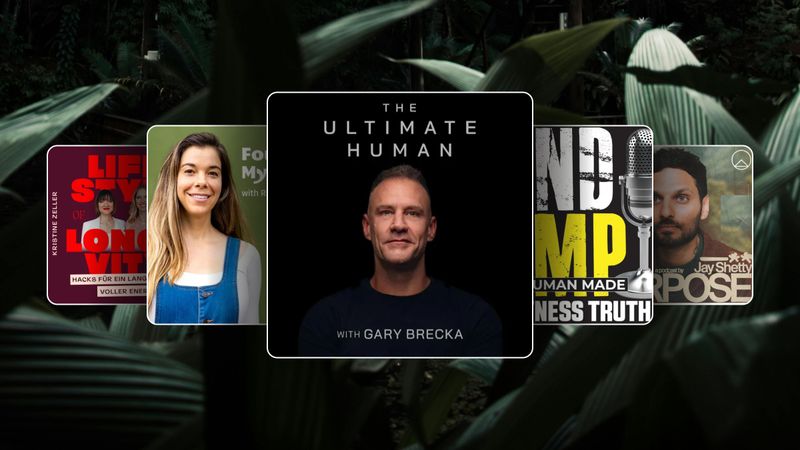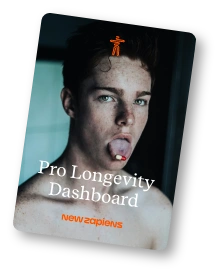Too Many Tools, Not Enough Focus: Why Preventive Health Needs Consolidation and Personalization

My journey with health started through sport and performance.
First through 15 years of first division field hockey, and then more recently, when I caught the endurance bug and started training for triathlons. That’s when I began taking my health even more seriously.
I got my first comprehensive blood panel outside the standard check-up. I invested in a wearable. I started tracking my sleep, HRV, and other metrics. Not out of fear, but out of curiosity and a desire to take ownership of my health, to optimize my daily performance, feel better, and live longer.
And honestly, it felt good. Tangible. Empowering.
But somewhere along the way, it started to feel... exhausting.
If you've ever bounced between three apps, a Substack newsletter, and a new supplement routine, all before your morning coffee, you know what I mean.
The world of longevity and preventive health has exploded. From testosterone to toxins, from senescence to saunas, from red light therapy to NAD drips, everything is a variable. And everything feels urgent, yet not everything is tested, nor will it have the same impact for everyone, depending on their body and their goals.
Podcasts tell you what’s essential. Instagram shows you what you’re missing. Your group chat shares the latest test you "have to try."
And yet, here’s the paradox: with more information, more protocols, and more tools than ever... acting on it all has never felt more confusing.
The Longevity Paradox: We Know More, But Do Less
We’re witnessing a surge in interest around data-driven health.
From wearables to lab panels, glucose monitors to sleep scores, individuals today have unprecedented access to their own health data. It’s a major leap forward. But it’s also created a new kind of complexity.
Many people I speak to are navigating a similar pattern. They’re eager to take control of their health. They test more often, read more, try more, but end up stuck in a loop of questions.
Which protocol is most relevant for me?
Which insight should I act on first?
Is this backed by science, or just trending on social media?
With a growing stack of tools, apps, recommendations, and biomarkers, the experience becomes fragmented. People jump from fasting to fueling, sauna routines to nervous system hacks, blood tests to sleep tracking. Each new insight raises more questions than it resolves, and it becomes harder to know what’s truly impactful, or just a gimmick.
And this often leads to:
- A sense of FOMO: “What am I missing?”
- A sense of overwhelm: “How do I make sense of all this?”
- And sometimes even paralysis: “Where do I start?”
More access doesn’t always lead to more action.
Without structure, context, and curation, even the best tools can become noise. The challenge is no longer about collecting data, but about transforming it into clarity, confidence, and sustainable habits.
The very tools designed to bring us closer to ourselves can sometimes create more distance.
What Comes Next: From Chaos to Consolidation
This isn’t a bug in the system. It’s the natural pattern of emerging markets.
The health optimization space is going through a fragmentation phase, where a thousand tools bloom, but nothing quite fits together yet.
This is normal. But it won’t last.
What’s missing today is an integrated layer. A system that’s not just another dashboard or tracker, but a guide. One that understands your goals, filters your data, and translates it into something you can actually act on.
That’s why I believe we’ll soon see the rise of health super apps. Digital systems that:
- Aggregate data from wearables, lab results, and lifestyle habits
- Prioritize what matters most, based on personal context and goals
- Curate credible, science-backed protocols
- Support action through automation, coaching, and community
This won’t just be a UX revolution, it will be a trust revolution.
Because the real challenge is no longer generating data. It’s knowing what to do with it, and having the confidence to follow through. Trust is the missing nutrient in modern health.
And yes, these tools will need to feel human, not clinical. If they become cold, robotic, or overwhelming, they’ll fail. Because longevity is not just about cellular optimization. It’s about behavioral health. About how we live, day to day. And that includes motivation, emotional resilience, and social connection.
The best tools will feel like a guide, not a drill sergeant. They’ll support us in seasons of discipline and softness. And they’ll adapt to each person’s way of living. Because sustainable health isn’t rigid. It’s relational.
Until Then: How to Navigate the Noise
We don’t need to wait for the perfect app or ideal system to start making smarter health choices. Sometimes, the best tech is still a pen and a quiet moment.
Here are four principles to help navigate the noise and bring focus back into the process:
Be at peace with imperfection
You won’t land on the perfect protocol on day one, or day one hundred. That’s not a failure, that’s the process. Longevity isn’t a sprint toward some flawless routine. It’s a long-term relationship with your body, built over time.
Test with intention, then reflect
Not all testing is equal. Instead of chasing the latest trend, invest in meaningful assessments, like blood panels or biomarker screenings, to understand your baseline. Start with objective data, not hype. This helps you prioritize what really matters for you, not what’s currently popular on YouTube. Then observe, adjust, and let go of what doesn’t serve you.
Centralize your chaos
Don’t let your health strategy live in ten different apps and tabs. Use a single space, a Notion dashboard, a notebook, or your calendar, to track habits, symptoms, test results, and progress.
And if you’re tech-savvy: tools like MCPs, connected trackers, and digital habit systems can help you build a lightweight operating system for your health. You don’t need perfection, you need a place to make sense of it all.
Question the source
Every protocol has a backstory. Every recommendation comes from someone, with their own physiology, goals, and biases. So before adopting it, ask: Who is this for? What evidence supports it? Does it fit my reality, or just their narrative?
In health, the best advice isn’t always the loudest. It’s the most grounded, personalized, and adaptable.
Longevity should feel like a liberation, not a burden.
Let’s build systems and mindsets that bring us back to clarity, instead of deeper into complexity.
Because health isn’t just about living longer.
It’s about knowing how and why to live well, now.
Author: Gaspard Hauet
Co-founder of ARO, the AI health concierge powered by your full body data. Former Field hockey athlete now passionate about endurance sport and Triathlon.




